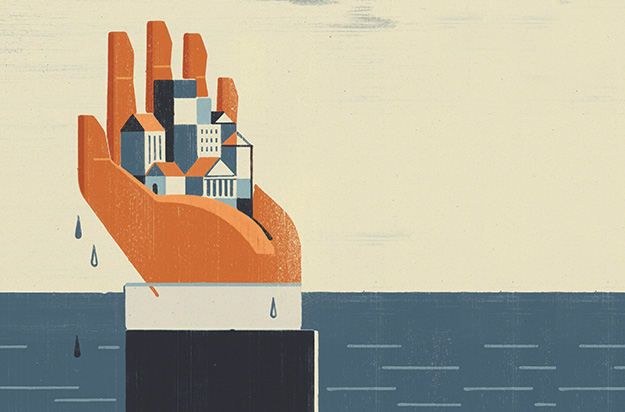Fall 2017: Building Livability
UTA researchers are creating a more sustainable, affordable North Texas for the future.
Skip to content. Skip to main navigation.
UTA researchers are creating a more sustainable, affordable North Texas for the future.
From carbon dioxide conversion to landfill mining, researchers at UTA are seeking viable alternative energy options.
Found in everything from space shuttles to dental fillings, composite materials have thoroughly infiltrated modern society. But their potential is still greatly untapped, offering researchers ample opportunity for discovery.
Within the particle showers created at the Large Hadron Collider, answers to some of the universe’s mysteries are waiting.
Model systems like pigeons can help illuminate our own evolutionary and genomic history.
UT Arlington's tiny windmills are bringing renewable energy to a whole new scale.
The stability of our highways, pipelines, and even manholes is reaching a breaking point.
Scientists believe they have discovered a subatomic particle that is crucial to understanding the universe.
UT Arlington researchers unlock clues to the human body’s most mysterious and complex organ.
UT Arlington researchers probe the hidden world of microbes in search of renewable energy sources.
Wounded soldiers are benefiting from Robert Gatchel’s program that combines physical rehabilitation with treatment for post-traumatic stress disorder.
Tiny sensors implanted in the body show promise in combating acid reflux disease, pain and other health problems.
Nanotechnology researchers pursue hybrid silicon chips with life-saving potential.
Biomedical engineers combat diseases with procedures that are painless to patients.

Understanding flood patterns of the past helped hospitals fight a hurricane in the present.
On August 25, 2017, the most powerful hurricane to hit Texas in 50 years came ashore on the state's southeastern coast. But thanks in part to UTA Assistant Professor Nick Fang, Houston hospitals were ready.
The civil engineer and his collaborator, Rice University Professor Phil Bedient, came to Houston armed with years of data for Brays Bayou during the state's previous worst flooding events. From that, they developed a state-of-the-art, radar-based flood alert system with high-tech sensors to timely inform emergency personnel in Houston's medical district—the largest medical center in the world—how to proceed before and during the hurricane. Along with their inputs, the flood forecasting information allowed the hospitals to secure power, stay open, and continue caring for patients with confidence during the natural disaster that dropped 60 inches of rain on the area.
Dr. Fang and his colleagues watched in real-time as the deluge was recorded on their flood alert system. Green lights changed to yellow, then orange, and finally the most critical, red, which told officials that Brays Bayou was about to be overtopped. The medical center took proper measures of flood protection based on the team's precise information.
Now that the water has receded and the region is rebuilding, Fang is turning to the next major flooding event. Houston has 22 bayous passing through the city, including Brays Bayou, Buffalo Bayou, White Oak, and Sims Bayou. What he envisions in the future is to develop a regional flood alert system with high-tech sensors for these major bayous. The resulting flood warning information could prove invaluable.
"It would at least increase the amount of alert time to allow people to leave or secure their property," Fang says. "What we learned with Harvey is that minutes sometimes mean saving lives and property. The cutting-edge technologies in real-time flood warning combined with the sensors do that. Plus, the data collected leads to a better built environment in Houston and the surrounding area."
Of course, those major bayous are part of 2,500 miles of waterways, according to the Bayou Preservation Association. If straightened out and laid end-to-end, the waterways would stretch from Houston to Boulder, Colorado, and back, with enough left over for a round-trip to Austin.
Fang says the answer might lie in how communities are built from this point forward.
"In an area like Houston that is so flat, maybe you create even more bayous for retention purposes when it floods. Then you have to create a pathway for the water to escape safely to the Gulf of Mexico," he explains. "That's difficult to do in a place with Houston's topography."
He adds that sometimes the answer is building with the needs of thorough engineering analyses and sound planning in mind.
"If what you're building doesn't provide a net zero in runoff water, the decision might have to be to not erect that project."
Fang is currently helping residents in Grand Prairie develop a similar flood alert system for the city's flood-prone areas. But half a year after Harvey, he is still struck by the hurricane's ferocity.
"It did so much damage," he says. "They're still recovering. It will take some time to come back totally. I hope our new technologies in flood warning with the sensors can help with any future tragedies."
Illustration by BRAD YEO